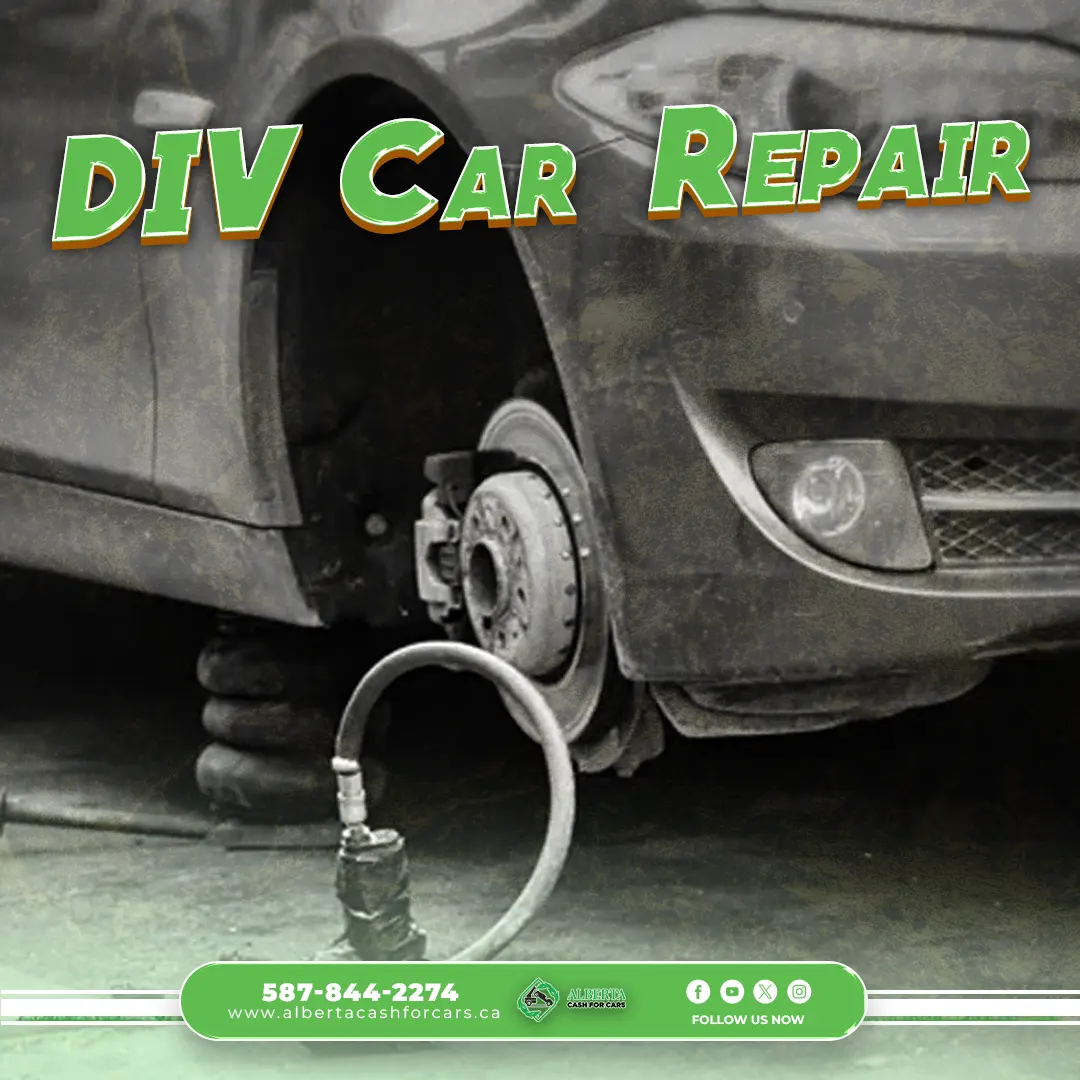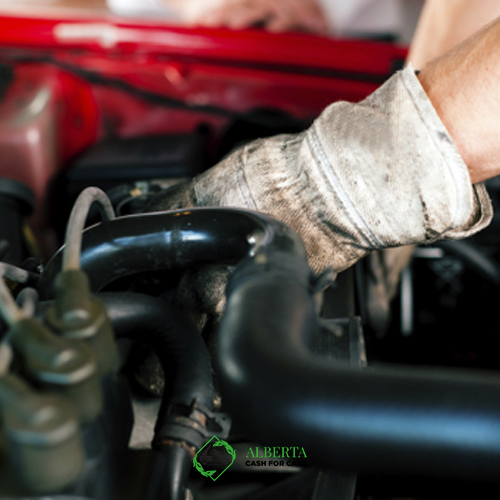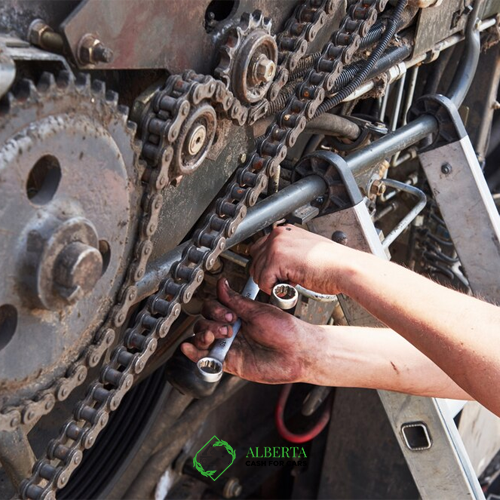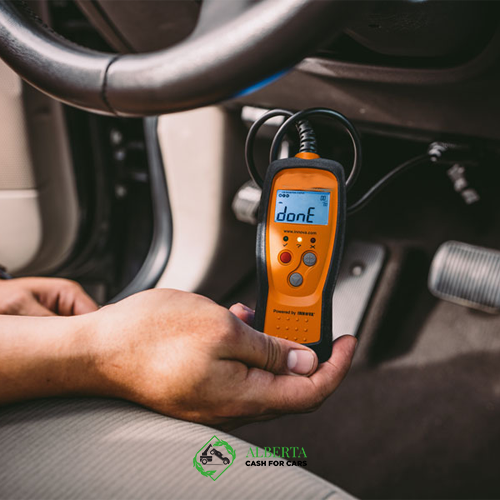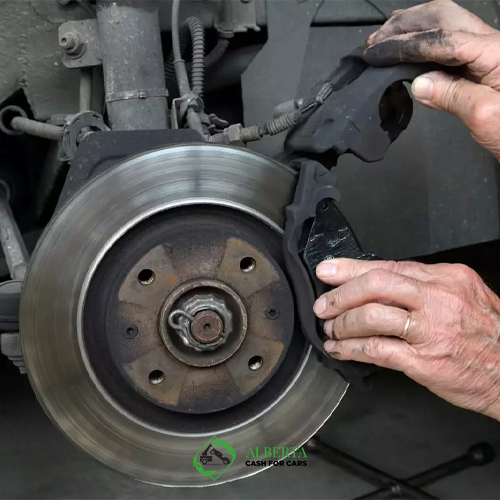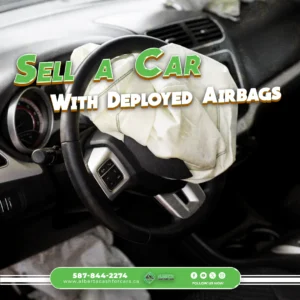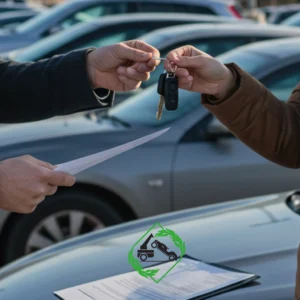Sometimes it happens that vehicle owners do not include car maintenance in their plans because it may cause additional costs for them. But regular car service is absolutely necessary because it can give you the ability to prevent more expensive repairs and breakdowns in the future. For example, not changing the oil regularly can cause various damages to the car engine or make your car less efficient. In general, repairs and maintenance such as changing brake pads or wheel alignment, can help you maintain control of your vehicle and avoid dangerous situations on the road. Today’s good news is that many repairs fall into the DIY car repairs category. With the help of the right tools, anyone can do these actions. In this article, we at junk car removal Calgary want to mention the techniques that are in the field of DIY car repairs.
No Hassle, Just Cash — Book Your Free Pickup or Quote Today!
What car repairs can you do by yourself?
The repairs you can do to your car are more than you think. The most common auto repairs people can do are oil changes and fluid refills. But if you put in a little more effort, you can do many car repair jobs more easily and cost-effectively than you might expect.
There are many expensive car repairs, but they can be much cheaper if you do them yourself. Of course, you should know that you will still have to pay for the parts, but you can save on high labor costs by diagnosing and fixing the problem.
What basic DIY car repairs tools should you keep in your garage?
To be able to repair your car, you need several tools. The following will help you to make car repairs easily:
- Ratchet wrench and socket set
- Basic screwdrivers
- Vice grips
- Breaker bar
- Torque wrench
- WD-40
- Rags
Some repairs may require you to purchase new tools. In many cases, buying a new tool is more cost-effective than taking your car to a repair shop.
Also be sure to disconnect the battery when servicing high current systems like the starter motor or fuel injectors to prevent shocks. Allow the engine to fully cool before repairing components near hot exhaust. Keep fire extinguishers and first aid kits handy just in case. Investing in some basic tools and following safe procedures makes easy DIY car repairs accessible.
The importance of safety and easy DIY car repairs gear
Safety and easy DIY car repairs gear, including gloves and safety glasses, play a paramount role in ensuring a secure and injury-free environment when undertaking any easy DIY car repairs. The importance of these accessories goes beyond mere precaution; it’s a fundamental aspect of responsible and effective automotive maintenance.
Often overlooked, gloves are an essential line of defense for your hands against a variety of hazardous materials. During automotive work, your hands come into contact with numerous chemicals, greases, and jagged parts. Donning gloves protects not only against irritating substances but also helps guard against scrapes and lacerations. Additionally, they prevent the spread of oils and dirt from your hands to the inner workings of the vehicle.
Just as gloves protect hands, safety glasses are vital for keeping your eyes safe from particles, dust, and splashes that can occur during auto maintenance. Activities like grinding, drilling, or working with various fluids can threaten eye safety. Any small shard of metal, fine dust, or droplet of fluid has the potential to inflict serious ocular harm. Safety glasses provide a dependable shield, keeping your eyes secure from unforeseen dangers, and enabling you to concentrate on your work without risking your eye health.
The importance of protective equipment transcends mere physical safeguards; it instills an attitude of conscientious do-it-yourself procedures. Making a habit of always using gloves and safety glasses in your routine instills a commitment to safety in every automotive project you undertake. This approach doesn’t just shield you from immediate harm but also helps ensure a longer and safer journey in your DIY activities.
Within the sphere of automobile maintenance, where meticulousness and a keen eye are crucial, equipping oneself with proper safety attire is more than a mere safety step it’s a fundamental aspect of the work. Spending on high-grade gloves and protective eyewear is essentially investing in the enduring nature of your do-it-yourself projects, granting you the assurance to tackle the complexities of car upkeep while protecting your most indispensable assets your hands and eyes. Bear in mind, that with easy DIY car repairs, personal protective equipment isn’t an optional add-on; it stands as your primary safeguard against unforeseen mishaps.
What are DIY car repairs?
Car owners today are increasingly turning to DIY car repairs as a means of taking control of their vehicle’s maintenance. This shift is fueled by a desire for independence and a proactive approach to caring for one’s car. Not all car repairs need to be done by a repair shop, and you can easily do them in your garage:
Related Post:
Understanding and Addressing +10 Common Car Issues
Use a code reader
With the help of an automatic code reader, you can diagnose car problems without taking your car to a mechanic. You can easily plug it into your car’s computer system, then interpret the trouble code readings to see necessary repairs.
Replacing the wiper blades
It’s easy to tell if your wiper blades need to be replaced. You can easily press its button to see if your blades are cleaning the glass. If the blades clean the glass in streaks, they must be replaced. Stores that sell auto parts have different models of economy blades. Usually, to install these blades, you must follow the instructions on the package. After removing the old blade, hold the wiper arms firmly as they may hit the glass and cause it to crack.
Replacing headlights
Perhaps the most difficult part of this process is choosing a new lamp. You may spend more time buying bulbs than installing them because the choices are confusing. Each type of lamp with its style makes it difficult to compare. But in general, the characteristics of front lamps are summarized into four categories: brightness level, lifespan, bright color, and energy consumption.
Repairing the stuck antenna
You can fix the stuck electric antenna by replacing the burnt motor. You can do both in two hours and avoid paying high dollar fees. You only need one special tool, and that is the antenna.
Oil change
You can do the same things a mechanic does to change your car’s oil for much less. To perform this repair, you must find new oil, an oil filter, and the location of your car’s oil drain plug. Drain the old oil into a container and close the container, then pour the new oil into the car.
Step-by-step DIY auto repair for oil change tutorial to increase engine life
One of the procedures involved in do-it-yourself auto maintenance and repair to extend the engine’s life and guarantee peak performance is changing the oil. Here is a tutorial that will walk you through this crucial step-by-step:
Collection of materials and tools:
Collect the necessary materials, including the right oil filter, the correct type and amount of engine oil, oil pan, socket wrench, oil filter wrench, and funnel.
Prepare the car:
Put the car in park on a level area and engage the parking brake. To properly drain the oil if your car is running, let it cool for a few minutes.
Locate the oil drain plug:
Position the oil drain plug onto the oil pan by crawling beneath the vehicle. Consult the owner’s manual for your vehicle if you are unsure of the location of the drain plug.
Remove the oil drain plug:
Using a socket wrench, carefully loosen and remove the oil drain plug. Place the oil drain pan below to collect the used oil.
Drain the old oil:
Allow the old oil to completely drain into the pan. Wait as this process can take several minutes. After draining, safely replace the oil plug.
Remove and replace the oil filter:
To get rid of the old oil filter, use an oil filter wrench. Apply a tiny bit of oil to the rubber gasket on top of the filter before replacing it, and then manually screw the new filter into place.
Adding new oil:
The oil filler cap is typically found on top of the engine; place the funnel on top of it. As directed by the manufacturer’s manual for your car, add the recommended amount and kind of oil.
Check the oil level:
After starting the car and letting it run for a short while, turn it off and let it run for another minute. Using a dipstick, determine the oil level and add more if necessary.
Disposal of used oil:
Dispose of used oil safely at a recycling center or auto shop that accepts used oil. Many places have built-in proper facilities for proper disposal.
Maintenance record:
Note the date and mileage of the oil change. This documentation helps track maintenance intervals and ensures timely changes.
Brake pads
Brake pads usually start from 35 dollars, and garages usually charge you at least 300 dollars for replacing them. You need to do this repair on time because if the brake pads are worn less than 1.8 inches, they can damage the rotors, making repairs more expensive and complicated. Changing brake pads is very simple. All you have to do is remove the tires; you need a jack and a jack.
The process of replacing brake pads is that you have to pull out the old brake pads and put the new ones in place. The brake pad box should have a grease pack which is usually applied to ensure the brakes are properly lubricated.
Car battery
Changing the car battery is a very easy process. This is very important because you definitely don’t want to wander the street or have to leave the car in the parking lot when it’s time to go to a meeting or a business meeting. Car batteries usually start at $75. In addition, the mechanics will charge you at least 100 dollars to replace them. Changing the car battery involves removing the cables, securing the new battery and reconnecting the cables.
Spark Plugs
Car spark plugs usually last up to 100,000 miles, but you may need to clean them occasionally. Removing car spark plugs is very easy, and you can do it with a specialized spark plug puller. In some cars, taking the help of inspection cameras allows you to see the small space that is placed in the plugs. Spark plugs can cost as little as $16, but mechanics will charge you at least $40 to replace them. The simplicity of this process allows you to do it yourself and save money.
Maintenance of car tires
Maintenance of car tires is mandatory and vital because it affects the car’s safety, fuel efficiency as well as the overall performance of the car. Checking car tire pressure requires a pressure gauge but does not require special knowledge. Most gas stations offer air to fill under-inflated tires. You can fix small flats in your car tires with flat tire repair kits. You will need a tire jack and a permanent fixture to rotate your tires, which should be done every six months or 6,000 miles. To increase the car’s safety, you need a strong jack stand, but generally, a tire rotation will not require special tools or technical knowledge.
Air Filter Replacement
Replacing your engine air filter is a quick, easy DIY task that keeps your engine running smoothly. Start by locating the air filter housing, usually in the engine bay near the firewall labeled “Air Filter”. Open the housing by unclipping any clasps or unscrewing fasteners. Remove the old air filter, taking note of the orientation and any arrows pointing direction of airflow. Use a clean shop towel to gently wipe any dust and debris from inside the housing. Unpack the new filter and orient it to match the old filter, with airflow arrows pointing towards the engine if applicable. Ensure the filter fully seats into the housing then close and re-latch the housing cover. Double check that hoses are securely connected. The engine may briefly run rough as the MAF sensor adapts to increased airflow from the clean filter.
Essential Tools | Your DIY Arsenal
Before embarking on any easy diy car repairsjourney, assembling the right tools is paramount. Understanding the basics and adhering to safety precautions ensures a secure environment for DIY car repairs.
Basic Tool Kit for Easy DIY Car Repairs
Building a basic toolkit involves acquiring fundamental items like wrenches, screwdrivers, pliers, and a jack. These versatile tools are the backbone of any DIY enthusiast’s arsenal, capable of addressing a myriad of common car issues.
Safety First
Safety is a non-negotiable aspect of easy DIY car repairs. From wearing the right protective gear to employing proper lifting techniques, a commitment to safety ensures that the DIY process is not only effective but also secure.
Online Resources and Tutorials
The internet is a treasure trove of information for easy DIY car repairs. Knowing how to utilize online resources and tutorials is key to successful self-maintenance.
Utilizing Online DIY Car Repair Guides
Online platforms provide a wealth of information through step-by-step guides and tutorials. Knowing where to find reliable resources is essential for effective easy DIY car repairs, with countless platforms offering detailed guidance.
Community Support and Forums
Engaging with online communities and forums allows DIY enthusiasts to share experiences, seek advice, and troubleshoot issues collectively. The sense of camaraderie among fellow DIYers enhances the learning experience.
Knowing When to Seek Professional Help: DIY Wisdom
While DIY repairs offer numerous benefits, understanding when a problem requires professional attention is equally important.
Understanding Limitations
Recognizing the limitations of DIY repairs prevents potential complications. Certain issues may require the expertise of a professional mechanic, and knowing when to seek help is a wise practice.
Choosing the Right Professional
When professional help is needed, knowing how to select reputable mechanics ensures quality service. Building a relationship with a trusted auto service provider is valuable for ongoing maintenance and complex repairs.
Troubleshooting Common Problems
Some common issues DIYers may encounter include:
- Leaks or dripping fluids: thoroughly clean all mating surfaces, replace worn gaskets, check for cracked housing
- Loose fittings: snug with proper wrench size, avoid overtightening
- Sticking components: lubricate joints, look for dirt buildup interfering with motion
- Excessive noise: inspect mounts, tighten fittings, check for damaged bearings/gears
- Intermittent operation: gently wiggle wiring harnesses while powered to check for shorts

